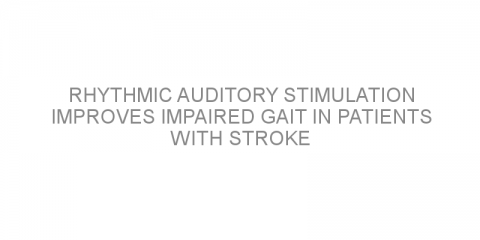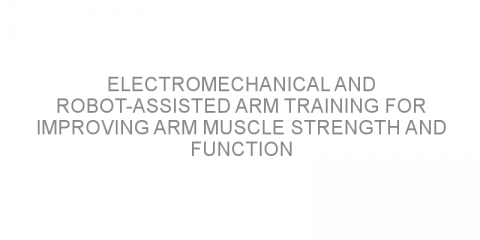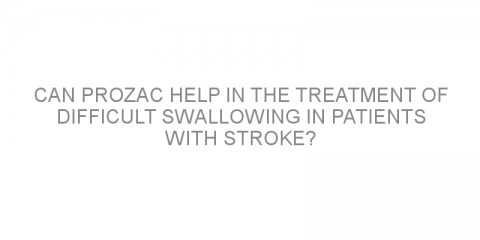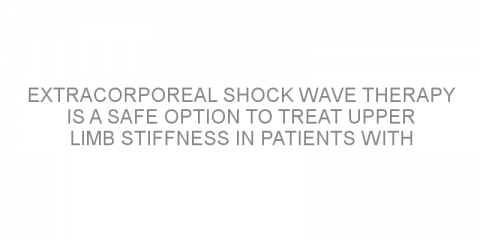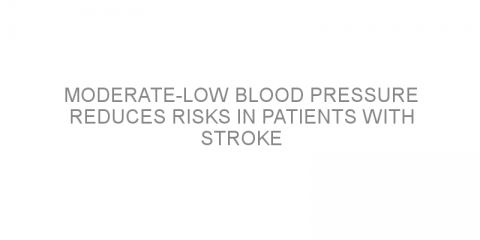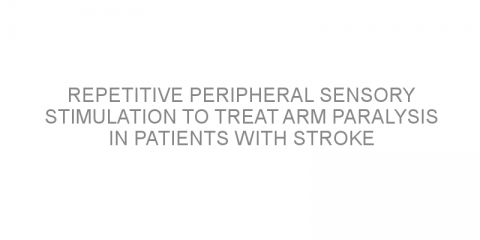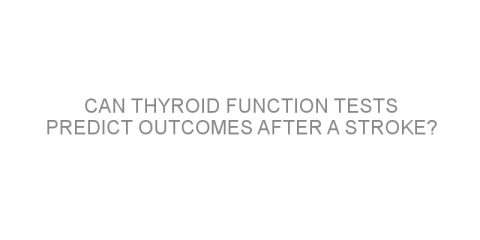In a nutshell This study aimed to see if the DASH diet (Dietary Approaches to Stop Hypertension) could reduce the risk of stroke. The main finding of the study was that adherence to the DASH decreased the risk of stroke. Some background The Dietary Approaches to Stop Hypertension (DASH) diet was developed in 1997. It consists of 8 components: high...
Read MoreStroke Posts on Medivizor
Rhythmic auditory stimulation improves impaired gait in patients with stroke
In a nutshell This study investigated the effect of gait (walking ability) training with auditory stimulation (AS; training the movements through hearing sounds such as music) in patients with stroke. Researchers suggested that AS helps improving gait in these patients. Some background Stroke is an acute disorder caused by insufficient oxygen being...
Read MoreSearching for patients who have had a stroke to test this new physical therapy option called transcranial direct current stimulation
In a nutshell This study is examining the effectiveness of transcranial direct current stimulation (tDCS) to improve the ability to walk in patients who have had a stroke. The main outcome to be measured is if tDCS with gait training can producer greater improvements in walking ability than gait training alone. This study is being carried out in Ohio, in...
Read MoreElectromechanical and robot-assisted arm training for improving arm muscle strength and function after a stroke
In a nutshell The aim of this study was to investigate how effective electromechanical (EM) and robot-assisted (RA) arm training is for improving arm strength and function after a stroke. The main finding of the study was that patients who used electromechanical and robot-assisted arm training might improve their arm function and strength. Some...
Read MoreCan Prozac help in the treatment of difficult swallowing in patients with stroke?
In a nutshell This study investigated whether fluoxetine (Prozac) improves dysphagia (difficulty in swallowing) after stroke. Researchers suggested that this therapy improves swallowing function in patients who had a stroke. Some background A stroke consists of poor blood flow to the brain which results in the death of brain cells. This can be...
Read MoreExtracorporeal shock wave therapy is a safe option to treat upper limb stiffness in patients with stroke
In a nutshell This study compared extracorporeal shock wave therapy (ESWT) and botulinum toxin type A (BOT) for the treatment of stiff upper limbs (arms) after a stroke. Researchers suggested that ESWT is a safe and effective option for the treatment of these patients. Some background Stroke is one of the leading causes of adult disability in most...
Read MoreDo bisphosphonates prevent fractures in elderly patients with stroke and Parkinson’s disease?
In a nutshell This study investigated the effectiveness of bisphosphonates (BPT) to prevent hip fractures in elderly patients with stroke and Parkinson’s disease. Researchers suggested that BPTs reduced the risk of fracture in these patients. Some background The risk of fracture is high in elderly patients with stroke and Parkinson’s...
Read MoreModerate-low blood pressure reduces risks in patients with stroke
In a nutshell This study aimed to investigate the association between blood pressure levels during the initial phase of a stroke and clinical outcome. The main finding of the study was that patients with moderate-low systolic (the amount of pressure when the heart contracts) blood pressure during the acute phase of a stroke had a lower risk of...
Read MoreBalance training and lateral insoles improve walking ability in patients with stroke
In a nutshell This study investigated if balance training and the use of lateral wedges insoles increase walking ability in patients with stroke. Researchers suggested that both therapies improve the walking capacity of these patients. Some background Patients with stroke usually experience mental and movement complications. Most patients can recover...
Read MoreCan robotic aids help improve walking parameters after a stroke?
In a nutshell This study investigated if robot-assisted gait training (RAGT) can improve walking in patients following a stroke. They found that RAGT improved walking in patients after a stroke. Some background A stroke is caused by impaired blood flow to the brain. Following a stroke, some patients may have one-sided paralysis. This is...
Read MoreRepetitive peripheral sensory stimulation to treat arm paralysis in patients with stroke
In a nutshell This study investigated the effects of repetitive peripheral sensory stimulation (RPSS) in the recovery of the arm movements of patients with stroke. Researchers suggested that RPSS is a safe and effective treatment for these patients. Some background Stroke is a major cause of disability worldwide. Arm paralysis (absence of movement) is...
Read MoreCan thyroid function tests predict outcomes after a stroke?
In a nutshell This study investigated if fatigue (tiredness) after a stroke is associated with the blood levels of the thyroid hormone TSH (thyroid stimulating hormone). Researchers suggested that TSH levels may have a role in fatigue after a stroke. Some background Stroke is one of the leading causes of death in the US. A stroke consists of a...
Read More

